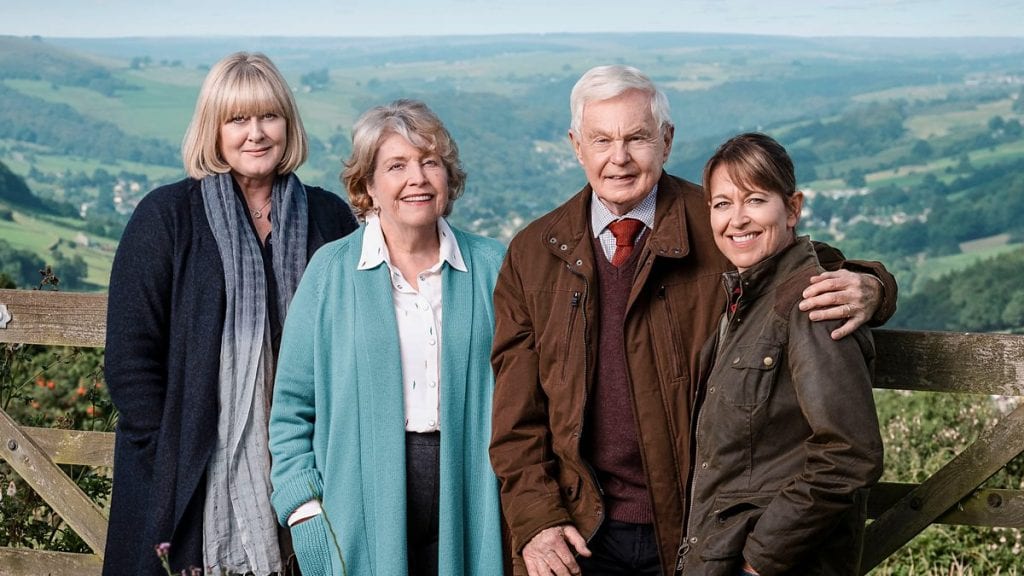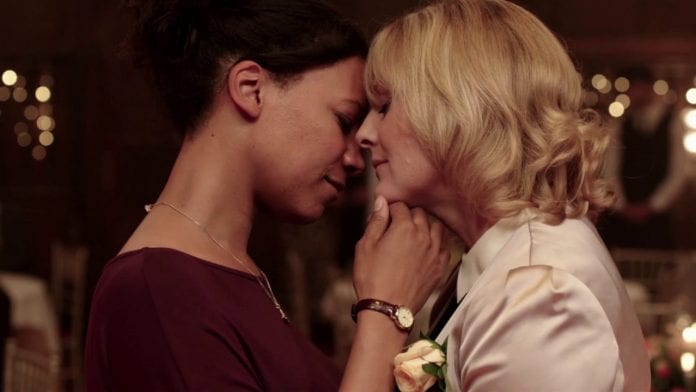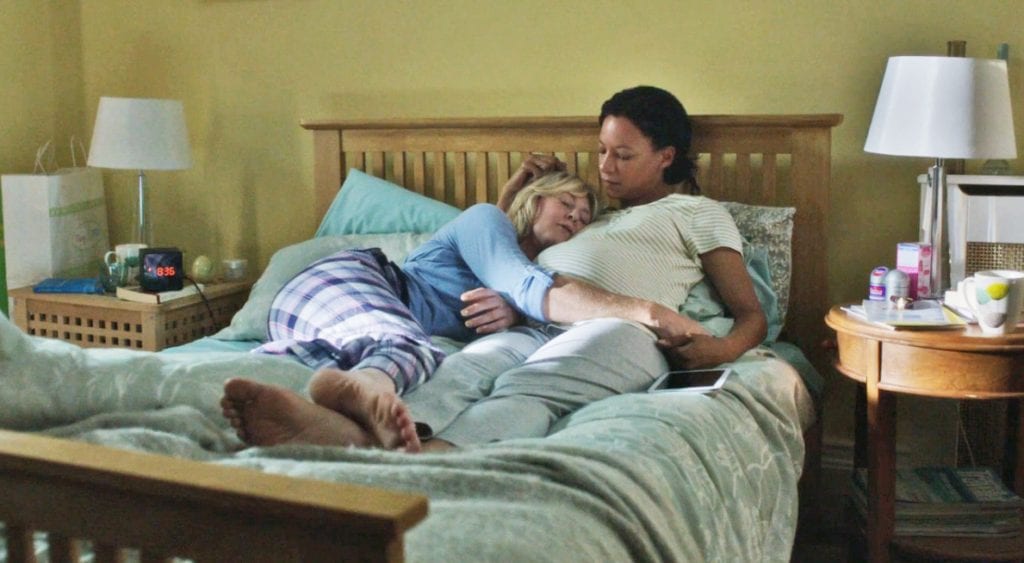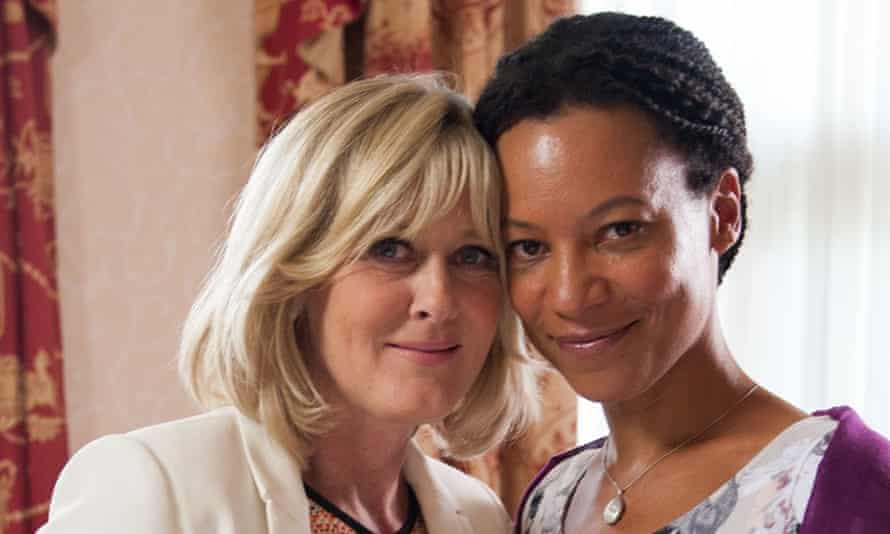When it comes to the older queer woman’s authentic representation in mainstream media, there hasn’t historically been a lot to work with. Even without the extra narrative nuisance of queerness attached, too many of our films and TV shows cannot accurately capture what it truly means to be a middle-aged woman in our current society. In November 2012, the BBC debuted the new mid-week drama Last Tango In Halifax, which quickly became the highest-rated show of that year. Primarily portraying a rekindled love affair between two 70-year-old protagonists, the show was naturally subversive in nature; with three female leads over the age of forty, sex-positive attitudes, and all-important LGBTQIA+ representation. Despite this, when lesbians and queer-identifying people alike recount their favourites from the visual sapphic canon, LTIH rarely features. Though its five seasons may be packaged as a cosy watch for older generations, the ground-breaking impact it had on future takes of queer and female sexuality cannot be dismissed.

‘Last Tango in Halifax’ follows Celia and Alan, two former childhood sweethearts, who find each other on a social networking site and rekindle their love, as well as the lives of their families
I was 18 when the BBC aired the season two finale on Christmas Eve 2013. After a tumultuous hour of tears and laughter, 47-year-old Caroline – a newly out lesbian – is left at her mother’s wedding by her half Nigerian love interest, Kate. She returns, and the two kiss passionately on the dancefloor in front of Caroline’s entire extended family. After countless episodes of family division and heated separations concerning Caroline’s sexuality, it was an indescribable feeling to see the moment she finally allowed herself to stop caring. The series mirrored the peak of my own coming out story, on the cusp of having those same sit-down conversations with my own family. I sat on my bed, knowing I was watching something magic unfold, my heart beating in my ears. My mum loved this show. My nan loved this show. Thanks to LTIH, I could offer them a perspective they could relate to when describing my own battle with who I was.
It’s this inter-generational effect that makes LTIH so unique in its own right. We’ve yet to see history repeat itself in British television with the main cast almost completely over 40, exploring issues that affect us all through a lens few of us choose to see. The show gave an incredible cross-section of the viewing public something to resonate with, as well as providing an honest and vulnerable platform to represent diversity in a way previously untouched. A narrative of coming to terms with a non-heterosexual identity had been unofficially reserved for characters in their teens and 20s, acting as the watercooler moment meant to shock in a longstanding storyline or framed around the structure of comedy. For those living through the criminalisation of homosexuality or Section 28, LTIH marked viewing queerness in a light many of us know as reality. It’s no surprise that Caroline’s story prompted floods of coming out stories and realisations from viewers, upholding the idea of fluctuating sexuality changing at any age.
Sarah Lancashire cemented herself as British acting royalty with her outstanding portrayal of Caroline, with Nina Sosyana’s Kate providing the gentile, closeted yin to Caroline’s self-assured yang. The two perform a tentative sapphic dance through three seasons that’s both endearing and realistic, akin to two teenagers exploring each other’s bodies for the first time. It’s Caroline’s relationship with her mother Celia (played by Anne Reid) that bangs the nail in the coffin of authentic, middle-aged queer representation. They navigate a relationship of stilted love and alienation, often resulting in adolescent cussing and drawn-out reconciliations. The presence of the male character equally aids authentic representation, with Caroline plagued by the continued damage of her ex-husband that refuses to move on. Each piece of the puzzle helps to shape the high standards of middle-aged queer characters we’ve yet to see again.
What’s most impressive is that this high-quality stylisation of a middle-aged lesbian character is the brainchild of an assumedly straight woman. Married to her first love for the last thirty-one years, Sally Wainwright has effortlessly turned her hand to something outside her own frame of reference in a way many queer creators cannot. Her track record has shown time and time again that she never compromises the sometimes grisly nuance that comes with a woman’s age, with Happy Valley marked as one of the best shows to ever grace television. The rivalled success of Gentleman Jack only supported this further, once again embodying the apparent dramatics, peaks, and pits that only a sapphic relationship can effortlessly move through. That being said, Wainwright’s work isn’t void of all the stereotypical lesbian trappings. Partway through LTIH’s third season, Kate is killed in a car accident, leaving Caroline widowed and solely responsible for raising a baby she didn’t really want. The unnecessary death begged the question of Kate existing only to be sacrificed in the name of plot, although the show’s typical integrity and rugged honesty followed through in Caroline’s later romantic interests. Still, there is unwavering regret surrounding that final decision. Two scripts were revealed to exist touting an alternative for Kate’s survival which public outcry dictated to be the preferred choice.
As we grow collectively tired of lesbian and queer characters bathing in their toxicity, there’s new room for Last Tango In Halifax to solidify itself as a joyous classic. Growing up with Bette Porter’s girlboss gatekeeping and Loving Annabelle’s romanticised look at underaged advances, queer girls arguably need a middle-aged role model they can objectively fancy but relate to in more of a maternal way. Caroline provides exactly that, as a role model with an unshakable understanding of female sexuality framed in a wholesome, subtly dramatic context. With the likes of BritBox and endless Youtube fancams, LTIH gets its second shot at celebrated status.
It’s really not hard to see why there’s truth to the claim ‘lesbians will watch anything with lesbians in’. We just want to see ourselves normalised at every stage of life.
Words by Jasmine Valentine
Support The Indiependent
We’re trying to raise £200 a month to help cover our operational costs. This includes our ‘Writer of the Month’ awards, where we recognise the amazing work produced by our contributor team. If you’ve enjoyed reading our site, we’d really appreciate it if you could donate to The Indiependent. Whether you can give £1 or £10, you’d be making a huge difference to our small team.


